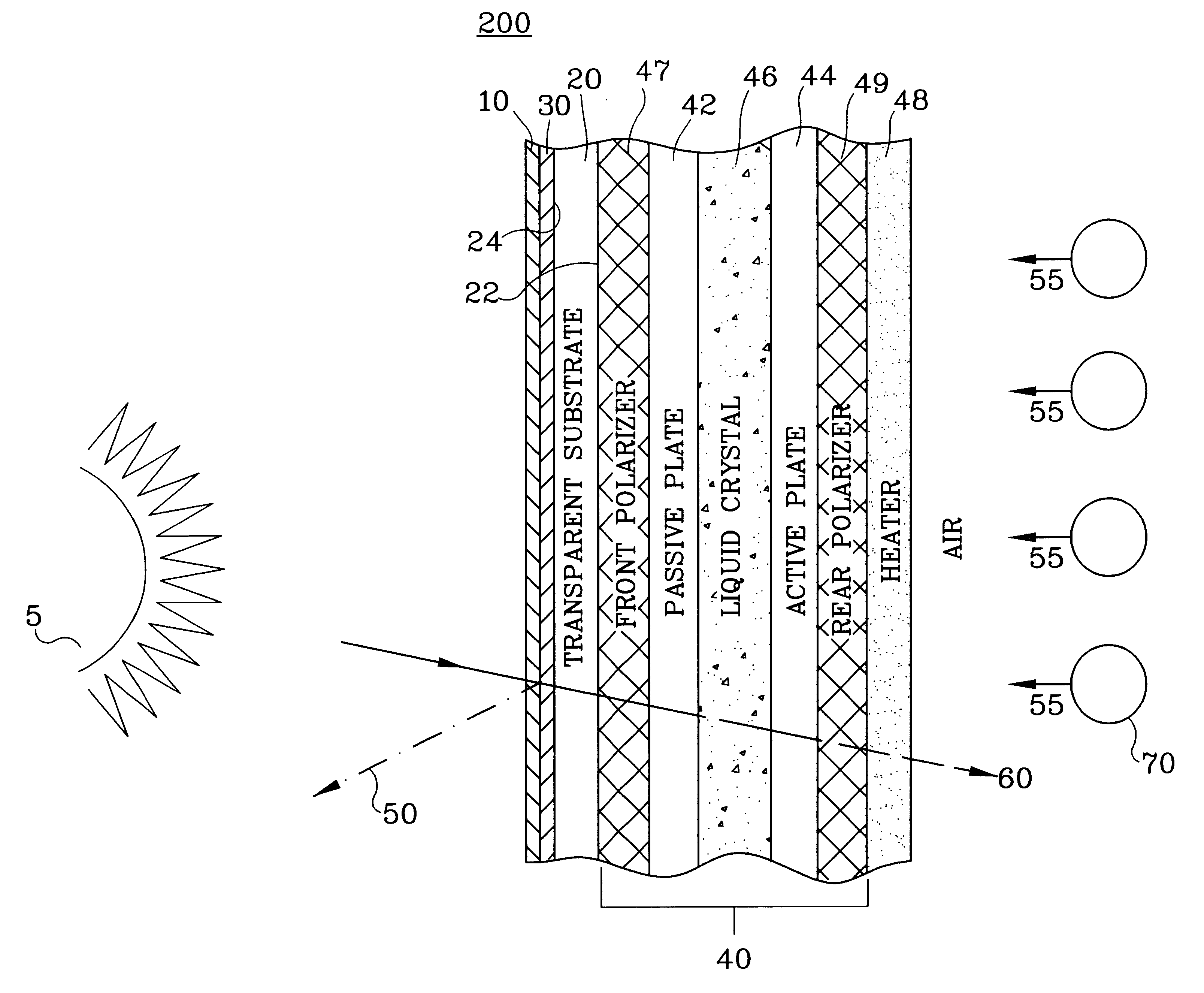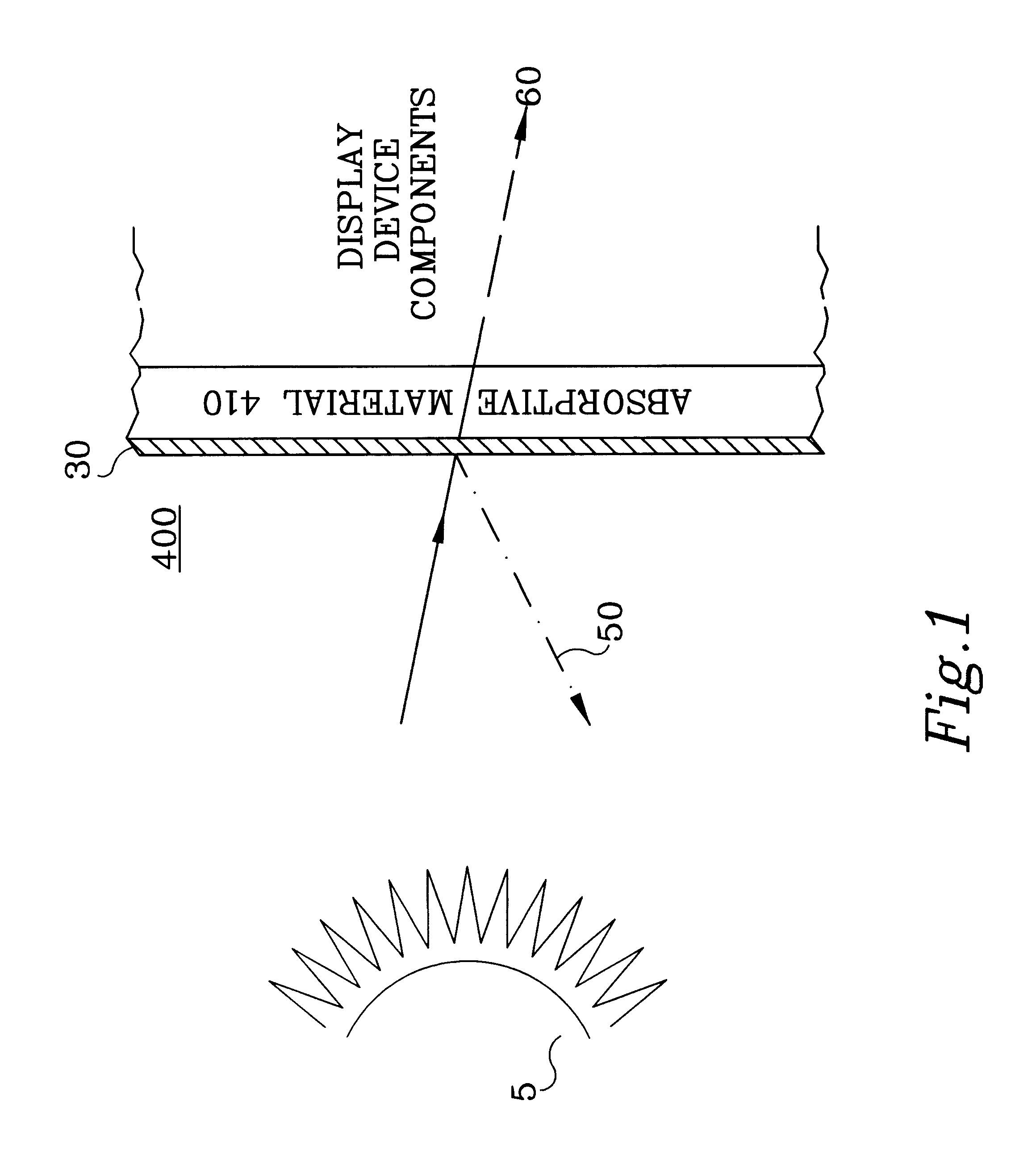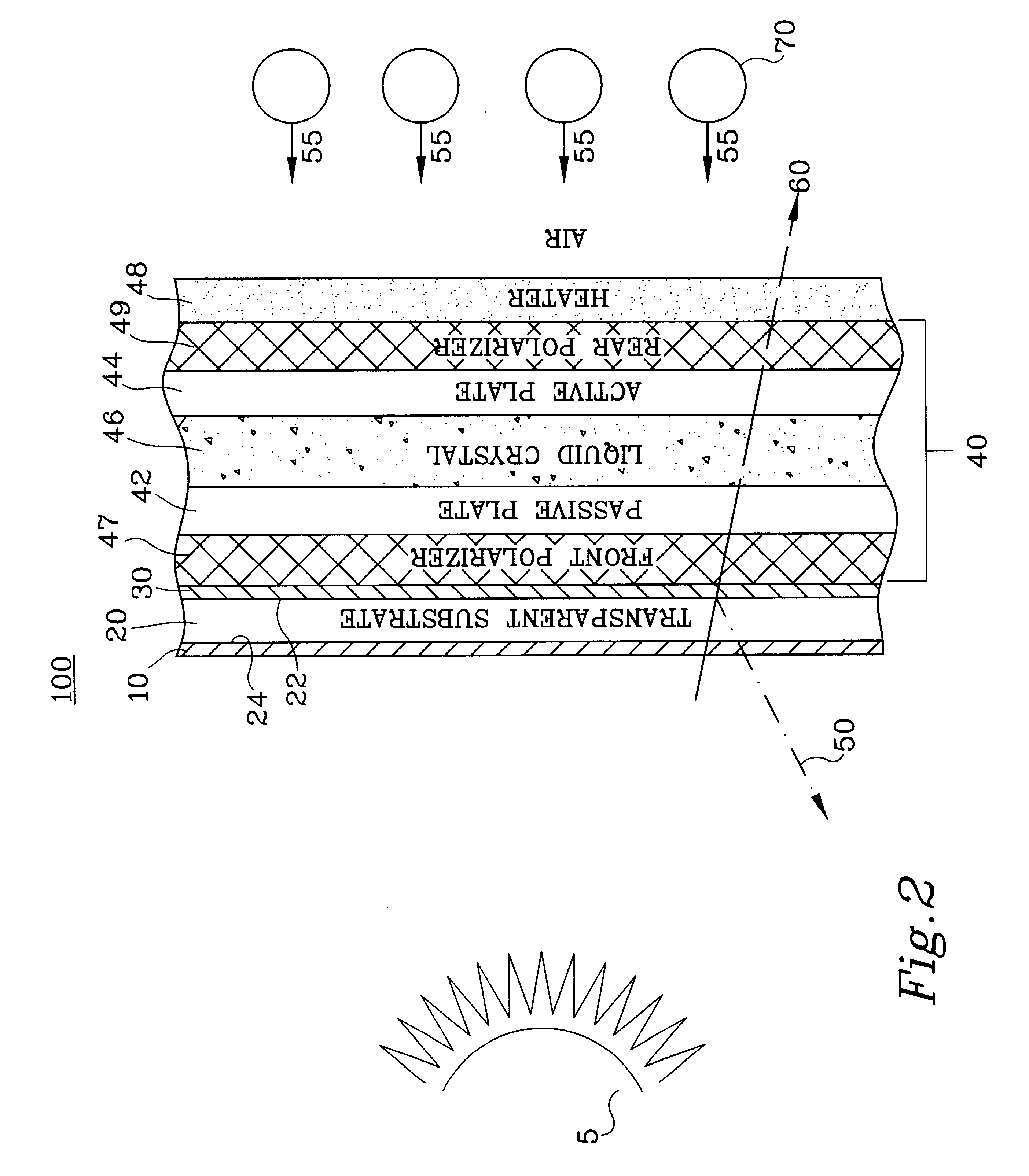Method of and apparatuses for reducing infrared loading on display devices
- Summary
- Abstract
- Description
- Claims
- Application Information
AI Technical Summary
Benefits of technology
Problems solved by technology
Method used
Image
Examples
Embodiment Construction
Although the following description of the present invention is provided with reference to a light-transmitting type active-matrix LCD device, the present invention is not restricted to this particular type of display. The present invention is directed toward any display that is used in an environment where solar loading on the display device is of concern, such as active-matrix LCDs, passive-matrix LCDs, reflective LCDs, transreflective LCDs, segmented LCDs, cholesteric LCDs, non-matrix LCDs, CRTs, etc. The following description is provided with respect to an LCD for convenience in introducing the present invention, but the present invention applies to any display device experiencing solar loading. Additionally, those skilled in the art will recognize that the present invention is limited neither to active-matrix LCD devices in general nor to LCD devices of any certain addressability (e.g., 640 by 480). In this regard, the present invention can also be used with any form of passive-...
PUM
 Login to View More
Login to View More Abstract
Description
Claims
Application Information
 Login to View More
Login to View More - R&D
- Intellectual Property
- Life Sciences
- Materials
- Tech Scout
- Unparalleled Data Quality
- Higher Quality Content
- 60% Fewer Hallucinations
Browse by: Latest US Patents, China's latest patents, Technical Efficacy Thesaurus, Application Domain, Technology Topic, Popular Technical Reports.
© 2025 PatSnap. All rights reserved.Legal|Privacy policy|Modern Slavery Act Transparency Statement|Sitemap|About US| Contact US: help@patsnap.com



